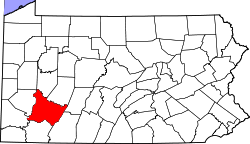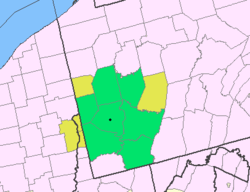Carbon | |
|---|---|
| Coordinates: 40°17′25″N79°33′37″W / 40.29028°N 79.56028°W | |
| Country | United States |
| State | Pennsylvania |
| County | Westmoreland |
| Elevation | 1,099 ft (335 m) |
| Time zone | UTC-5 (Eastern (EST)) |
| • Summer (DST) | UTC-4 (EDT) |
| GNIS feature ID | 1171187 [1] |
Carbon is an unincorporated community and coal town in Westmoreland County, Pennsylvania, United States.



